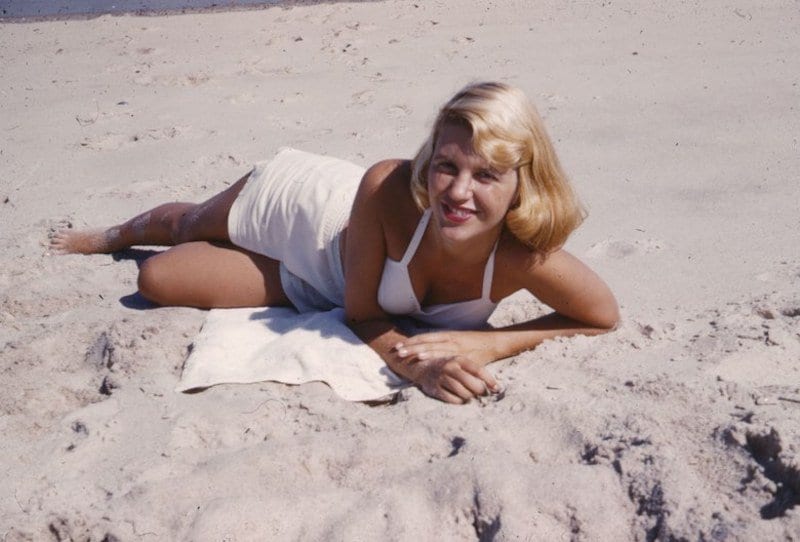For the last two years, the world has been restricted to homes. Daily activities that couldn’t be managed without stepping out, came indoors all at once — from office to grocery shopping and schools. As the world accepts the new normal, News18 launches weekly classes for school children, explaining key chapters with examples from happenings around the world. While we try to simplify your subjects, a request to break down a topic can be tweeted @news18dotcom.
Note: This article may be triggering for some with tendencies of depression and suicide. Read with caution.
The following illustrations are Plath’s own.
I clearly remember the day I first read her poem. It was a windy afternoon in the dull grey and green silhouettes of my school building. As I turned the pages, my 10th standard self wasn’t too impressed. This was very different from the poems I had come to like – flowery, majestic, and dreamy. It was almost as if it wasn’t poem enoughwhat with the almost sordid concept it talked about.
The American writer, Sylvia Plath, perhaps would have envied the fierce preference of that young girl towards the more ‘entertaining’ pieces in her CBSE English book. But it would fade.
Towards the end of my school term, I had read the poem several times to revise. And it grew on me in a way that made me uncomfortable. It was the beginning of a love affair, but I failed to see it then.
Because the poem was so…real. Predisposed to fiction and the escape it provided, I did not understand why anyone would want to write in such stark reality. It was preposterous. But, why was I coming to like it?
The Mirror
I am silver and exact. I have no preconceptions.
Whatever I see I swallow immediately
Just as it is, unmisted by love or dislike.
I am not cruel, only truthful
The eye of a little god, four-cornered.
Most of the time I meditate on the opposite wall.
It is pink, with speckles. I have looked at it so long
I think it is part of my heart. But it flickers.
Faces and darkness separate us over and
Now I am a lake. A woman bends over me,
Searching my reaches for what she really is.
Then she turns to those liars, the candles or the moon.
I see her back, and reflect it faithfully.
She rewards me with tears and an agitation of hands.
I am important to her. She comes and goes.
Each morning it is her face that replaces the darkness.
In me she has drowned a young girl, and in me an old woman
Rises toward her day after day, like a terrible fish.
The answer is far from simple, just like Sylvia Plath’s life and her body of work. It is often easier to not acknowledge the ‘big dark feeling’ (as her friend and writer Al Alvarez would later describe) that lies beneath the surface.
It is hard to think about it, much less write about it – and incessantly. Ironically, it seems Plath found her way to look courageously into the Mirror of her mind and heart, through her writing. And while her tragic end (she died of suicide aged 30, in 1963) would make her opponents argue that she ‘drowned’, she left behind some of her courage for a 10th standard girl to look into her Mirror too, and face her reflection.
In today’s #ClasseswithNews18, we delve into the world of Sylvia Plath, and how the writer helped bring mental illness into modern discourse.
Ten years forward, I am now 26. Life now looks different. It’s an uncharacteristic blur of too much information, courtesy the digital age. Cultures, opinions, facts have merged into an ever bludgeoning world, ever moving forward, ever evolving.
While it looks to be too fast, real changes in society always take time, I believe. And one of the most distinguishable ones are the open conversations about mental health that are taking place today. Anxiety and depression are common internet keywords, whether they turn up in Internet subcultures or serious tête-à-têtes.
In my doomscroll time, I come across so many internet personalities documenting their struggles with a myriad of mental illnesses. Bright-eyed and fashion-savvy, the profile of a girl with bright pink hair is one of my favourites; her posts feature memes along with occasional serious documentations of her journey with depression. While it may not seem in earnest to someone unfamiliar with the complicacies of internet culture, I have seen how her interactions with fellow peers help keep her afloat.
This is a world very different from the one Plath lived in. Writers after her death and tumultuous life often draw up a bleak imagery of her last days – a cold house with no telephone, isolated after the end of her previous life with her estranged husband, writer Ted Hughes. It’s a terribly lonely image.

But lonelier still is Plath’s own journey of writing. That is so because she wrote in her own identity as a woman – a troubled woman – back when it wasn’t cool or appreciated, as it would be today.
She brought to the fore her struggles with depression from a young age; suicide attempts, difficult relationships and trauma from her relationships with her father and husband, and what she felt along it all, through her written word.
The posthumous Pulitzer winner’s style of writing has even been described ‘as brutal as a truncheon’. But that’s what I (and millions of others) seem to like about her.
Whether it be the confessional and fearless style of her poems, digging into feelings often falsely implicated with the romanticised version of a young and beautiful (dead) woman, or the self-revelation her semi-fiction book, the Bell Jar, offers, Plath wrote as an intelligent woman would write rooted with the support the current culture offers. And she did so at a time when culture did not offer that support, at all.
As Golden Globe award-winning writer Lena Dunham would so eloquently put: “I wonder if Plath would have been saved had she been born in a different time: in a time when psycho-pharmacologists are no more shameful to visit than hairdressers and women write celebrated personal essays about being bad mothers….Would she have been a riot grrrlembracing an angry feminist aesthetic? A blogger for Slate? Would she have been less dependent on the approval of viewers and critics and more aware of the positive effect her book was having on splintered psyches and girls with short bangs everywhere? Or would that kind of connectedness and access to unmitigated and misspelled negativity have driven her even madder?”
After being the target of snowballs in school, the writer with an IQ of 160, wrote in her diary: “every now and then, the neutral and impersonal forces of the world turn and come together in a thundercrack of judgment. There is no reason for the sudden terror, the feeling of condemnation, except that circumstances all mirror the inner doubt, the inner fear.”
And Plath’s struggle with her clinical depression has been an ongoing debate for many years even after her death. While some blame the treatments available (or lack thereof) for patients suffering from mental illnesses at the time, some blame the stigma they were faced with.
But whether or not Plath’s suicide could have been prevented may not even be conducive to the legacy she has left behind. We live in the internet age where ‘get therapy’ has become a common catchphrase. To some it may seem like trivialisation, but it cannot be denied that openness awarded to a historically taboo reality which literally takes lives, cannot be bad.

“Although Plath eventually succumbed to her mental illness, she was alive for long enough to talk about it and create raw and true oeuvres exposing the inner turmoil of her thoughts. It’s an exciting thought that her art is becoming a symbol for normalizing the taboos around mental health. Perhaps that was the reason she wrote so fervently in the last months before her death, and it’s the reason she will be remembered as a significant and vitally important voice for generations to come,” argues an analysis titled ‘What Went Wrong for Sylvia Plath?’.
“If the moon smiled, she would resemble you.
You leave the same impression
Of something beautiful, but annihilating.”
― Sylvia Plath, Ariel
If I had one takeaway from the author and poet so close to my heart, it would be her courage. Courage to talk about her life, and the dangerous melancholy intertwining it. In my dark, lonely moments, it gives comfort to realise I live in a world where that melancholy can be talked about and treated – a world Plath helped to create.
And if I, for a moment, forget what Plath is most remembered for, the love affair that began for me ten years ago as a school girl put me in touch with a writer un-hinderingly genius, rich, complicated and exciting. That is also Plath’s legacy.

And she worked hard at her legacy, almost like an artisan, as described by her estranged husband Ted Hughes. She would constantly write, re-write, and journal. “To my knowledge, she never scrapped any of her poetic efforts. With one or two exceptions, she brought every piece she worked on to some final form acceptable to her, rejecting at most the odd verse, or a false head or a false tail. Her attitude to her verse was artisan-like: if she couldn’t get a table out of the material, she was quite happy to get a chair, or even a toy. The end product for her was not so much a successful poem, as something that had temporarily exhausted her ingenuity,” he wrote.
Hughes’ pick for an epitaph for her wife’s grave seemed appropriate in light of who Plath really was: “Even amidst fierce flames the golden lotus can be planted.”

And today, the lotus blooms…and the girl looks into the Mirror…and a woman rises from the dead like the Christian legend Lazarus. Just as another 10th standard girl begins her love affair with Plath’s rich writings.
This news piece may be triggering. If you or someone you know needs help, call any of these helplines: Aasra (Mumbai) 022-27546669, Sneha (Chennai) 044-24640050, Sumaitri (Delhi) 011-23389090, Cooj (Goa) 0832- 2252525, Jeevan (Jamshedpur) 065-76453841, Pratheeksha (Kochi) 048-42448830, Maithri (Kochi) 0484-2540530, Roshni (Hyderabad) 040-66202000, Lifeline 033-64643267 (Kolkata)
Read the Latest News and Breaking News here


